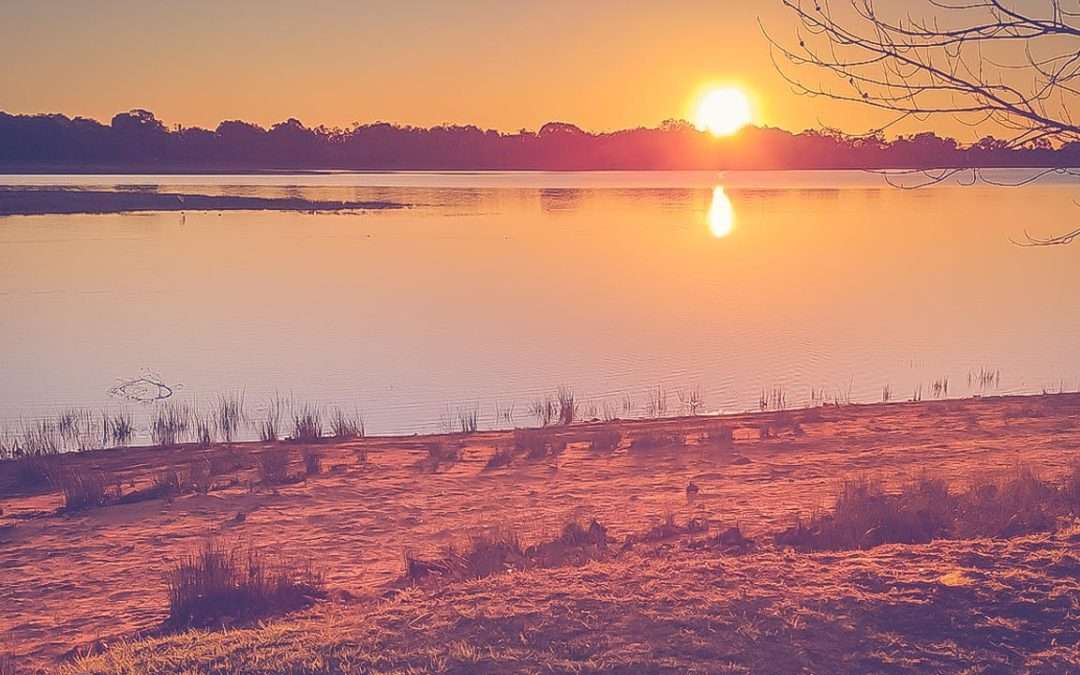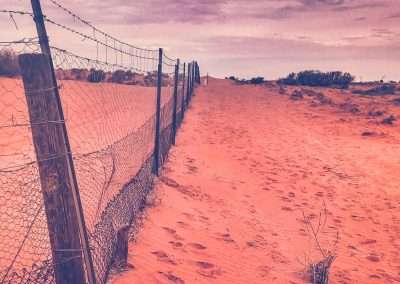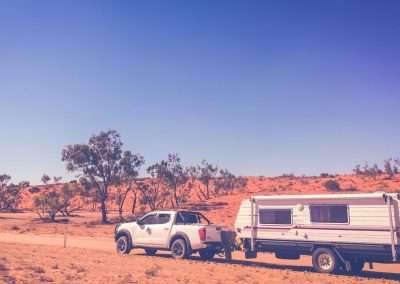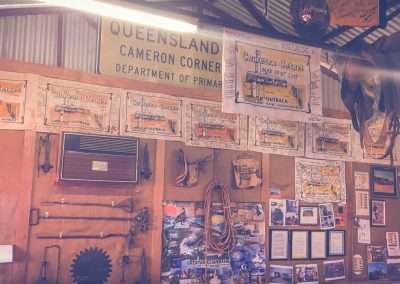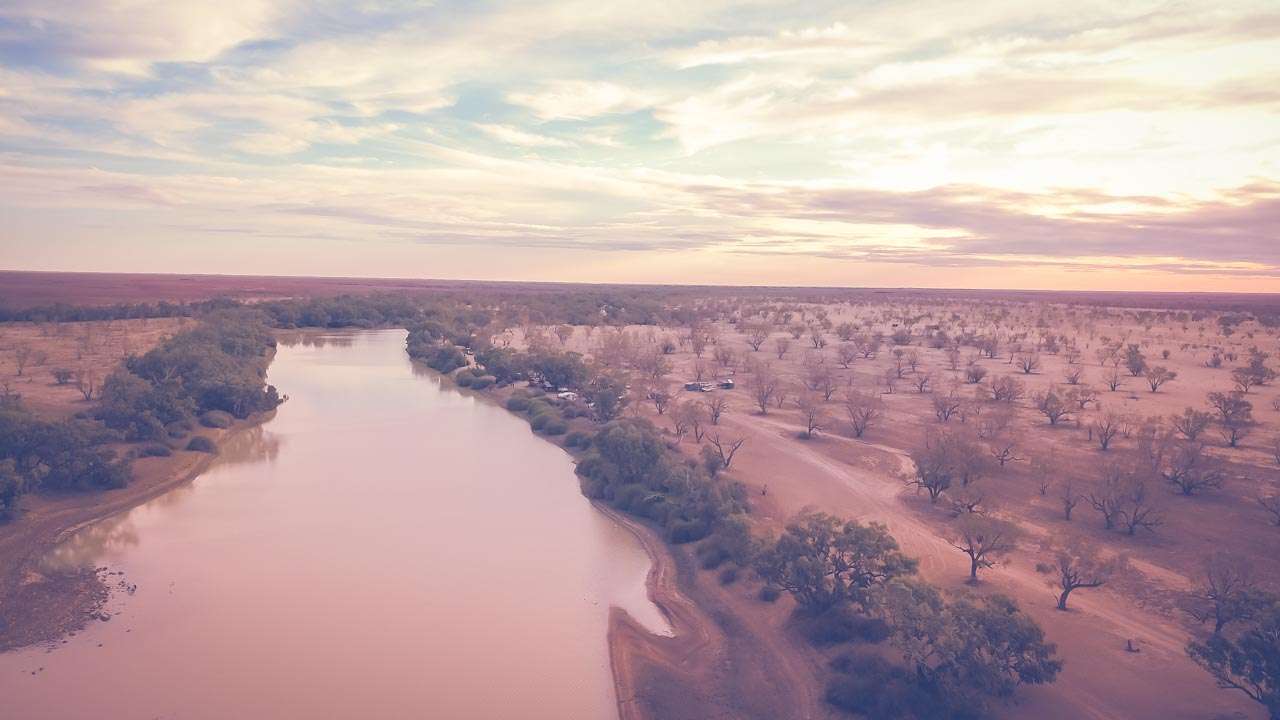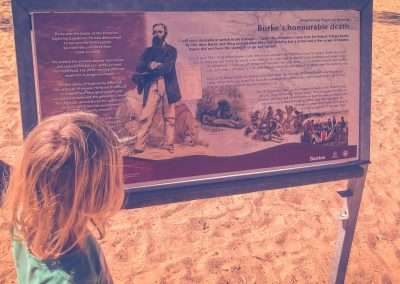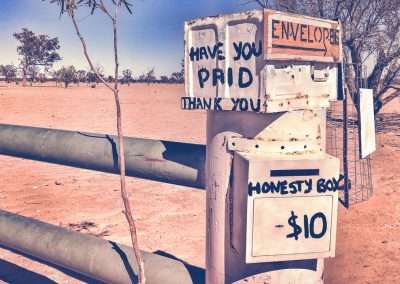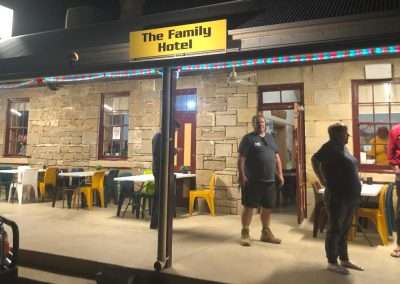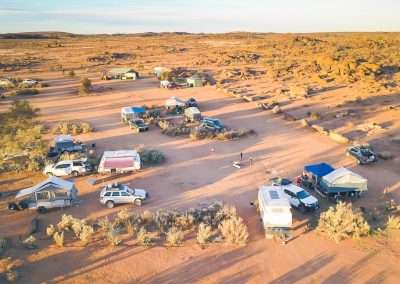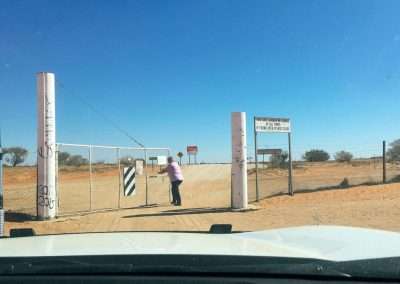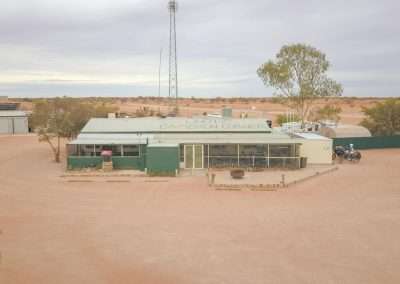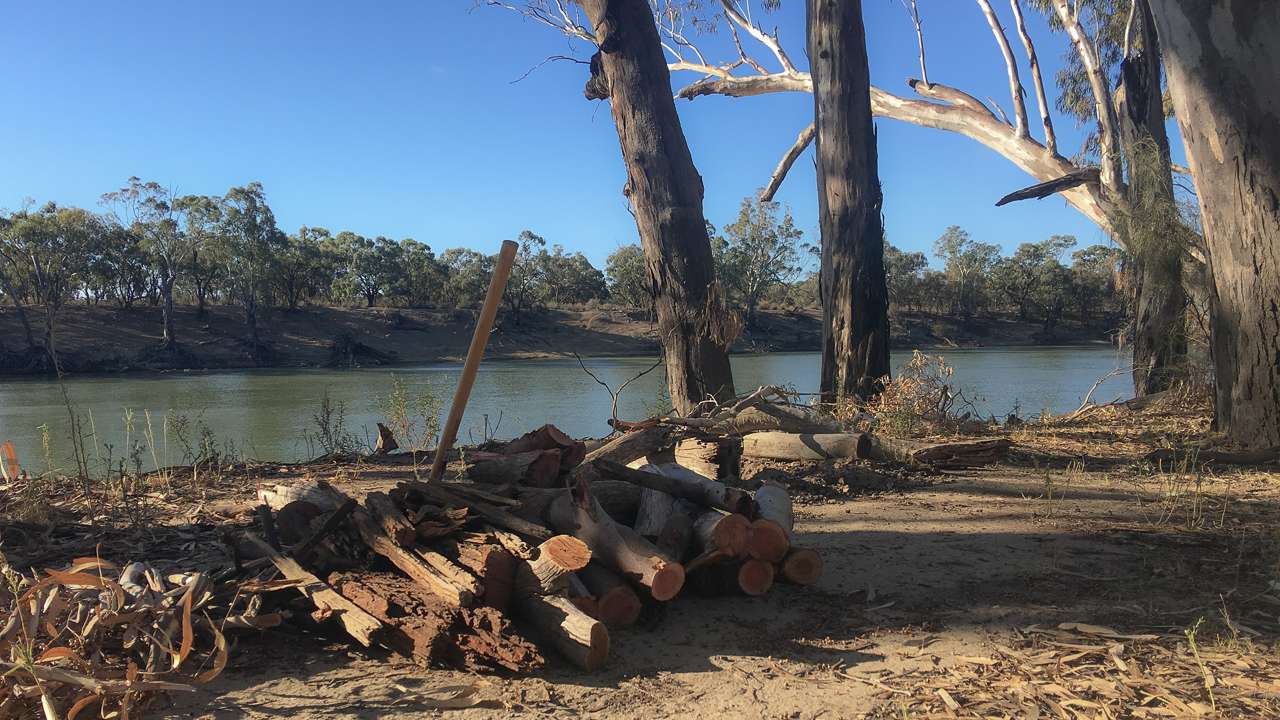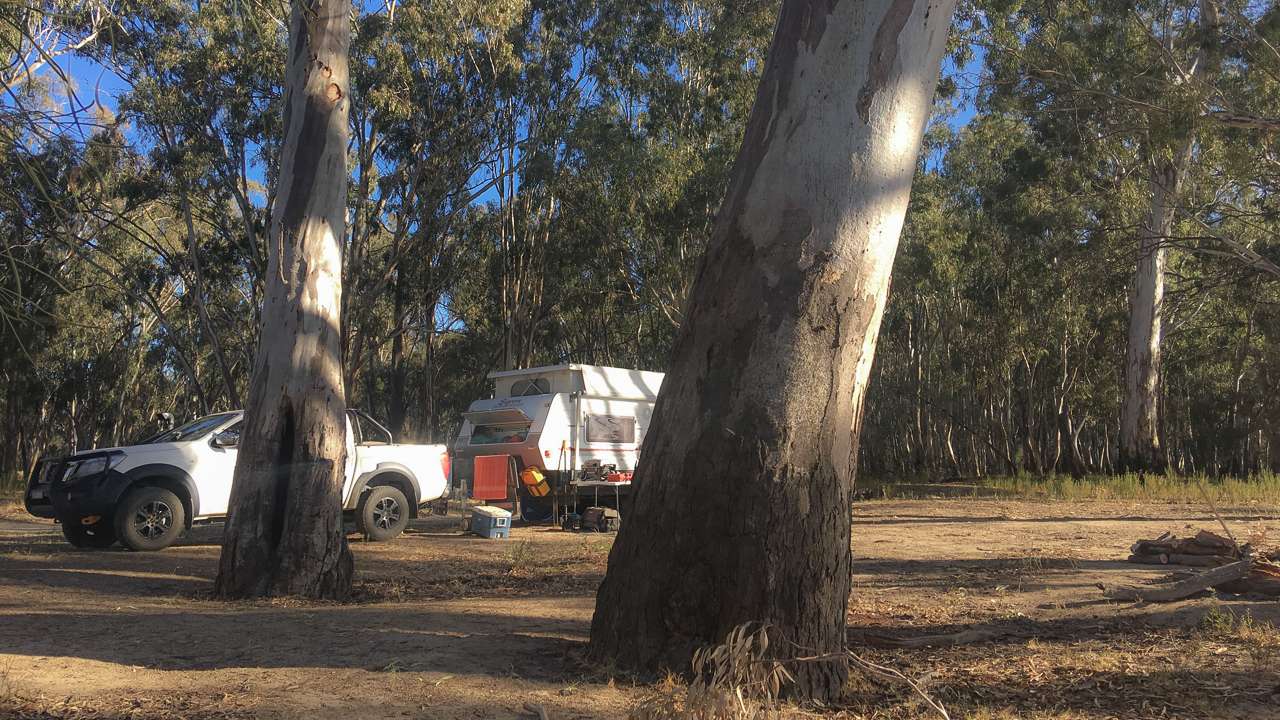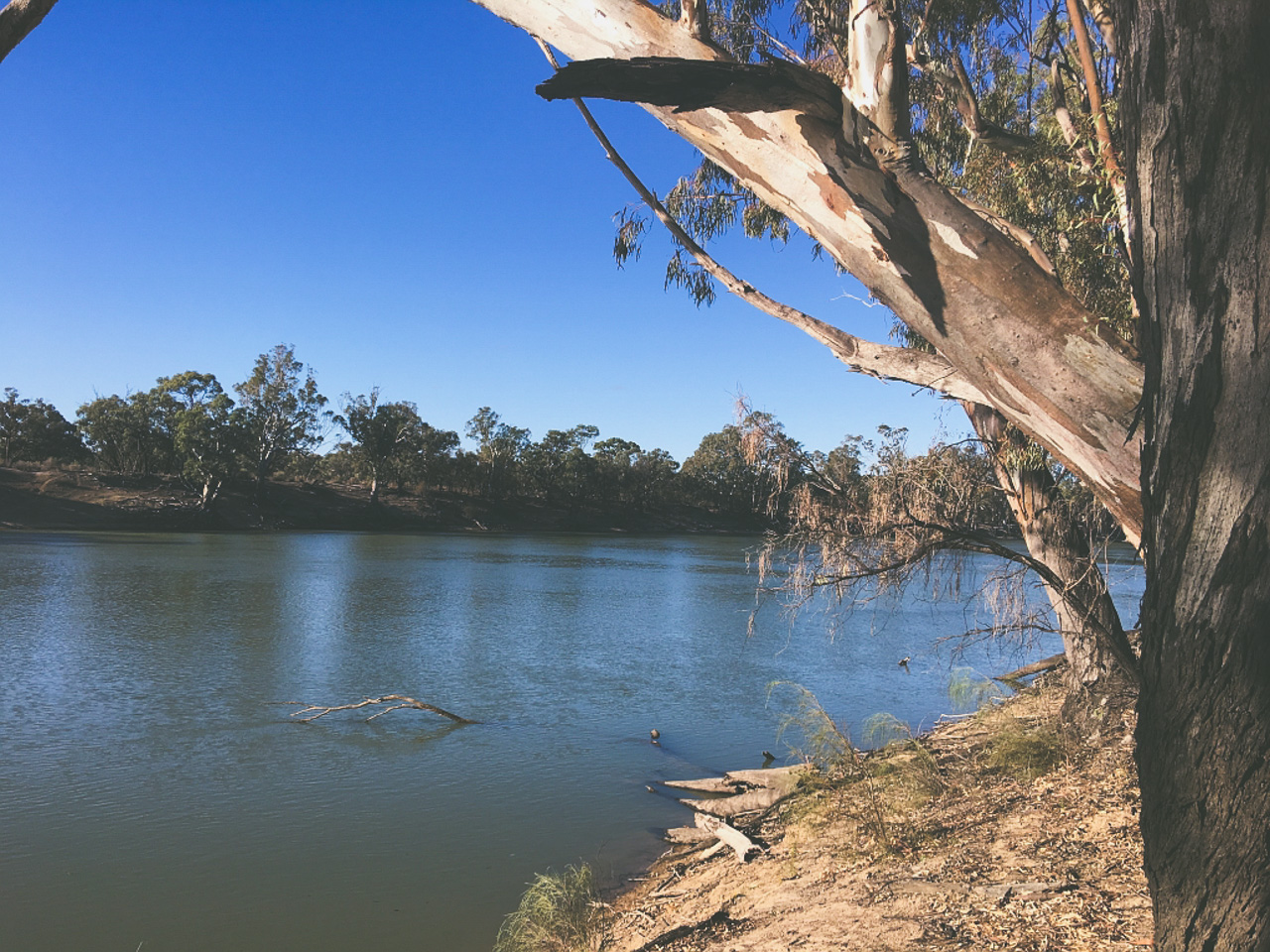Explore Tibooburra a remote town in Outback NSW known for its rich history and stunning landscapes. Tibooburra accommodation options as well as what to do and how to get there. Tucked away in the remote north-western corner of New South Wales, Tibooburra is a hidden gem waiting to be discovered.
Known as the gateway to the Corner Country this small outback town offers a unique blend of history, culture and natural beauty. Whether you’re an adventurer seeking rugged landscapes or a history buff interested in Australia’s gold rush and explorer era Tibooburra has something for everyone.

Welcome To Tibooburra Sign
History Of Tibooburra
Early Indigenous History
Long before European settlers arrived, the area now known as Tibooburra was home to the Wangkumara people. Their rich cultural heritage is evident in the numerous rock carvings and ancient artefacts found throughout the region.
European Exploration and Settlement
European exploration began in the mid-19th century, with explorers like Charles Sturt and Thomas Mitchell passing through the area. The discovery of gold in the late 1800s brought a surge of prospectors and settlers, transforming Tibooburra into a bustling outback town.
Gold Rush Era
The gold rush era left an indelible mark on Tibooburra. The town’s population swelled as hopeful miners flocked to the area, seeking their fortunes. Today, remnants of this golden age can still be seen in the town’s heritage buildings and historical sites.

Tibooburra Caravan Park Unpowered Section
Geography
Location And Accessibility
Tibooburra is situated approximately 1,200 kilometres from Sydney making it a remote but easily accessible destination for Aussie travellers. The town is best reached by car with well maintained roads leading through stunning outback scenery.
Unique Geographical Features
The town is surrounded by striking landscapes, including the red sand dunes of the Strzelecki Desert and the rocky outcrops of Sturt National Park. These unique geographical features make Tibooburra a photographer’s paradise.

Replica Of Sturts Whaleboat At Tibooburra
Tibooburra Attractions
Tibooburra Hotel
A visit to Tibooburra wouldn’t be complete without stopping by the historic Tibooburra Hotel. Established in the late 19th century, this iconic pub offers a glimpse into the town’s past and a chance to mingle with friendly locals.
National Parks: Sturt National Park
Sturt National Park located on the outskirts of Tibooburra is a must-visit for nature enthusiasts. The park boasts diverse wildlife, rugged landscapes and numerous walking trails, providing endless opportunities for exploration.
Tibooburra Courthouse Museum
For those interested in the town’s history, the Tibooburra Museum offers a fascinating collection of artefacts, photographs and exhibits detailing the area’s past. It’s a great place to learn more about the gold rush era and indigenous heritage.
Aboriginal Rock Carvings
Scattered throughout the region, the Aboriginal rock carvings offer a unique insight into the cultural history of the Wangkumara people. These ancient artworks are a testament to the deep connection between the indigenous community and the land.

Amanda Outside Family Hotel At Tibooburra
Outdoor Activities
Bushwalking And Hiking Trails
Tibooburra is a haven for outdoor enthusiasts, with numerous bushwalking and hiking trails crisscrossing the surrounding landscapes. Whether you’re a seasoned hiker or a casual walker there’s a walking track to suit every fitness level.
Bird Watching
The area’s diverse habitats attract a wide variety of bird species making Tibooburra a prime destination for bird watchers. Bring your binoculars and keep an eye out for native species like the majestic wedge-tailed eagle.
Off-Road Adventures
For those seeking a bit more excitement, Tibooburra offers plenty of off-road adventures. The rugged terrain and open spaces are perfect for four-wheel driving providing an adrenaline pumping way to explore the outback.
- Take the jump up loop road to visit the spectacular jump ups and drive on through to Cameron Corner for lunch then return to town. Mud maps are available from the roadhouse.
- Drive an out and back trip to Cameron Corner.
- Do a day trip out to Milparinka and visit Pooles Grave and Depot Glen where Sturt holed up waiting for rain.

Depot Glen Near Milparinka
Tibooburra Accommodation: Your Guide To Staying In The Heart Of The Outback
When planning a trip to Tibooburra one of the most crucial aspects to consider is accommodation. Tibooburra, located in the far northwest of New South Wales, is a fascinating destination known for its rugged landscapes, rich history and rugged outback charm. Whether you’re visiting for its historical significance, the stunning natural scenery or the sense of adventure finding the right Tibooburra accommodation will significantly enhance your experience.
Types of Accommodation In Tibooburra
Hotels And Motels
Tibooburra offers a variety of hotels and motels, each with its own unique charm. These establishments provide comfortable lodgings with essential amenities making them a popular choice for visitors looking for convenience and comfort.
Experience The Best Of Tibooburra At Tibooburra Caravan Park
Introduction To Tibooburra Caravan Park
Tibooburra Caravan Park is your gateway to the stunning landscapes of Outback New South Wales. Whether you’re seeking adventure or relaxation, this park provides the perfect setting.
Tibooburra Accommodation Options At Tibooburra Caravan Park
Caravan Sites
The caravan sites at Tibooburra Caravan Park are spacious and well-maintained. Each site is equipped with power and water connections, ensuring a comfortable stay for all visitors.
Cabins
For those preferring a bit more comfort, the park offers a range of cabins. These cabins come with modern amenities, including air conditioning, kitchen facilities and comfortable beds.

Our Supreme Getaway Caravan At Tibooburra Caravan Park
Amenities and Facilities
- Camp Kitchen
The camp kitchen is fully equipped with cooking facilities, allowing guests to prepare their meals. It’s a great spot to meet fellow travellers and share stories over a hearty meal.
- BBQ Area
Enjoy a traditional Australian BBQ in the designated BBQ area. It’s perfect for social gatherings and enjoying the great outdoors.
- Laundry Facilities
The park provides laundry facilities, making it convenient for long-term stays. The machines are modern and easy to use.
Booking in Advance
Due to its popularity, it’s advisable to book your accommodation at Tibooburra Caravan Park in advance. This ensures you get the best spot and avoids any last-minute hassles.
Conclusion To Tibooburra Accommodation Options At Tibooburra Caravan Park
Tibooburra Caravan Park offers a unique blend of comfort and adventure. With its excellent facilities, beautiful surroundings and a range of activities, it’s the perfect destination for your next outback escape.
Camping Sites
Camping is a great way to immerse yourself in the natural beauty of Tibooburra. With several designated camping areas, particularly within Sturt National Park, you can enjoy the serenity of the outback under the stars.
Tibooburra Hotel
Tibooburra Hotel was constructed from locally quarried sandstone during the Australian Gold Rush in 1882. While the beloved Hotel has faced some challenges recently, it still stands proudly today and continues to provide a much-loved oasis in the harsh Australian Outback. For visitors to Corner Country, it is a must-see attraction affectionately called “The Two Storey.”.
The “Two Storey” is overflowing with unique history & special details, including recycled timbers & gold (and other treasures) embedded in the bar. Tibooburra Hotel also offers a variety of accommodation options with eight luxury rooms out the back and five stylish pub rooms on the second floor.
There’s an award-winning menu, 8 cold beers on tap and a great beer garden & stage. You’ll receive nothing but good ol’ Country Pub hospitality from your hosts Tracey & Craig Hotchin!
The Fire & Rebuild At The Tibooburra Hotel
As some may be unaware, the newly renovated Tibooburra Hotel was destroyed by a fire in February 2021 & reconstruction is still ongoing. Fire seems to have destroyed every iconic pub at some point in its history, so we are committed to restoring her to her original glory and beyond! Different stages of our rebuild are currently operational, are almost complete and are yet to start. It is our sincere gratitude to all guests for their understanding during the hotel’s reconstruction phase and their support during the work.
Family Hotel
Another iconic place to stay is the Family Hotel. Known for its unique murals painted by famous artists, this hotel offers a blend of history and art, providing a memorable stay for guests.

Family Hotel Tibooburra
Camping In Tibooburra
Sturt National Park Camping Sites
Camping in Sturt National Park is an unforgettable experience. The park offers several camping sites each providing a unique perspective of the outback landscape. These sites are equipped with basic facilities like toilets and picnic tables.
Aboriginal Land Council Camp Site At Tibooburra
The Aboriginal Land Council camp site at Tibooburra is a really awesomely great camp site. They have hot showers and flushing toilets all in an outback setting and it was only $15 a night when we were there in 2019. We’ll be there again in 2025 so I must do an update if anything changes with the price. It really is a superb spot to set up camp for a night or two. They have drinking water available and it is good, clean and tastes excellent. There is a walk you can do from the Aboriginal Land Council camp site. It leaves the back of the park and loops out and around and works its way back to aboriginal burial grounds near the main Tibooburra sign on the way into town. At the corner where the road heads out to Cameron Corner. It’s a nice, easy, interesting walk.
Tips for Camping in the Outback
When camping in Tibooburra it’s important to be well-prepared. Bring plenty of water, a good supply of food and all necessary camping gear. Be mindful of the weather conditions and always inform someone about your plans.
Tibooburra Weather: A Comprehensive Guide
Tibooburra situated in the far northwest corner of New South Wales is known for its unique outback climate. Understanding the weather patterns of Tibooburra weather is crucial for anyone planning a visit or for those living in the region. This guide provides a detailed look at Tibooburra’s weather throughout the year helping you prepare for the conditions you might encounter.
Overview Of Tibooburra’s Climate
Tibooburra experiences a semi-arid climate characterised by hot summers, mild winters and low rainfall. The weather can be extreme, with significant temperature fluctuations between day and night.
Tibooburra Weather – Summer
Summer in Tibooburra, which spans from December to February, is typically very hot. Daytime temperatures often exceed 40°C (104°F), making it one of the hottest regions in New South Wales. The heat can be intense so it’s crucial to stay hydrated and seek shade during peak sun hours.
Rainfall during summer is generally sparse, but when it does occur, it can result in sudden and heavy downpours. These rain events can lead to temporary flooding, as the dry, hard ground is unable to absorb water quickly.

David Inside The Family Hotel Tibooburra
Tibooburra Weather Summer Tips
- Hydrate regularly and avoid prolonged exposure to the sun.
- Wear lightweight, breathable clothing and a wide-brimmed hat.
- Be prepared for sudden rain showers and potential flooding.
Tibooburra Weather – Autumn
Autumn from March to May brings a slight relief from the scorching summer heat. Temperatures start to drop with daytime highs averaging between 25°C to 35°C (77°F to 95°F). Nights can be cooler providing a welcome respite from the daytime warmth.
Rainfall remains low, but the occasional thunderstorm is not uncommon. The landscape begins to recover from the harsh summer, with sparse vegetation showing signs of life.
Tibooburra Weather Autumn Tips
- Enjoy the milder temperatures for outdoor activities.
- Be aware of thunderstorm warnings and take necessary precautions.
- Evenings can be cooler so pack a light jacket.
Tibooburra Weather – Winter
Winter in Tibooburra in the months from June to August is mild compared to other regions. Daytime temperatures range from 15°C to 25°C (59°F to 77°F), while night-time temperatures can drop significantly, sometimes reaching as low as 0°C (32°F).
Frost is rare but can occur on particularly cold mornings. Rainfall is minimal during winter, contributing to the overall dryness of the region.
Tibooburra Weather Winter Tips
- Layer your clothing to adapt to fluctuating temperatures.
- Mornings and evenings can be quite chilly so pack warm clothes.
- Despite cooler temperatures sun protection remains important.
Tibooburra Weather – Spring
Spring from September to November, sees a gradual warming trend. Temperatures climb back up with daytime highs ranging between 25°C to 35°C (77°F to 95°F). Nights are warmer compared to winter making for comfortable sleeping conditions.
Spring is one of the most pleasant times to visit Tibooburra as the landscape often bursts into bloom following the sparse winter rains. Wildflowers and green shoots add a touch of colour to the otherwise arid environment.
Tibooburra Weather Spring Tips
- Spring is ideal for hiking and exploring the outback.
- Be prepared for warmer days as the season progresses.
- Keep an eye out for wildlife and blooming flowers.
Tibooburra Weather Related Considerations For Visitors
Heat Precautions
The extreme heat in Tibooburra especially during summer requires visitors to take adequate precautions. Heat exhaustion and dehydration are real risks. Always carry enough water, wear sunscreen and limit physical activities during peak heat hours.
Road Conditions
Weather can affect road conditions in and around Tibooburra. Heavy rains can lead to flash flooding, making some roads impassable. Always check the latest road conditions and weather forecasts before embarking on a journey.
Wildlife
Tibooburra weather influences local wildlife behaviour. During the cooler month, you might see more wildlife activity, as animals take advantage of the milder temperatures. Conversely the intense summer heat often drives animals to seek shelter, reducing daytime sightings.
Best Time to Visit Tibooburra
The best time to visit Tibooburra largely depends on your tolerance for heat and your planned activities. For most visitors, the cooler months from April to October offer the most comfortable conditions for outdoor activities and sightseeing.
Spring (September to November) and autumn (March to May) are particularly favourable, providing a balance between temperature extremes and scenic beauty. However, those interested in experiencing the raw, intense heat of the outback might find the summer months fascinating, albeit challenging.
Preparing For Your Trip
When planning a trip to Tibooburra, consider the following:
- Pack appropriate clothing for the season, including sun protection and warm layers for cool nights.
- Stay informed about the latest weather forecasts and road conditions.
- Plan your activities around the weather to ensure a safe and enjoyable visit.
- Hydrate regularly and carry sufficient water supplies especially during summer.
Tibooburra weather is a defining feature of this outback town. Understanding the seasonal variations and preparing accordingly can enhance your visit, ensuring you have a safe and memorable experience. Whether you’re drawn to the vibrant blooms of spring, the mild days of autumn, or the rugged heat of summer, Tibooburra offers a unique glimpse into the Australian outback’s diverse climate.
Cultural Significance
- Indigenous Culture and Heritage
The indigenous culture and heritage of the Wangkumara people are integral to Tibooburra’s identity. Visitors can learn about their traditions, stories and connection to the land through various cultural experiences and guided tours.
- Best Times For Wildlife Spotting
The best times for wildlife spotting are during the cooler months, when animals are more active. Early morning and late afternoon are ideal times to catch a glimpse of the region’s unique wildlife.
- Travel Tips
- Best Time To Visit
The best time to visit Tibooburra is during the cooler months of April to October, when temperatures are more manageable for outdoor activities. However, each season offers its own unique charm and opportunities for exploration.
- What To Pack
When packing for a trip to Tibooburra, be sure to include essentials like sunscreen, a hat, sturdy walking shoes and plenty of water. It’s also a good idea to bring a camera to capture the stunning landscapes.
- Safety Tips For Travelers
Safety is paramount when travelling in remote areas like Tibooburra. Always let someone know your travel plans, carry a first aid kit and be prepared for extreme weather conditions. It’s also important to respect local customs and wildlife.
Photography Hotspots
- Scenic Viewpoints
Tibooburra is a photographer’s paradise, with numerous scenic viewpoints offering breathtaking vistas. Be sure to visit popular spots like the Sturt National Park lookout for stunning panoramic views.
- Iconic Landmarks
The town is home to several iconic landmarks that make for great photo opportunities. Capture the charm of heritage buildings, the rugged beauty of the outback and the unique character of Tibooburra.
- Tips For Capturing The Best Shots
To capture the best shots in Tibooburra, plan your photography sessions around the golden hours of sunrise and sunset. These times offer the best lighting conditions and can add a magical quality to your photos.
Historical Sites
Heritage Buildings
Tibooburra’s heritage buildings offer a glimpse into the town’s rich history. Take a stroll through the town and admire the well-preserved architecture that tells the story of its past.
Gold Rush Relics
Remnants of the gold rush era can still be found throughout Tibooburra. Explore old mining sites and relics that serve as a reminder of the town’s golden history.
Notable Landmarks
In addition to heritage buildings and gold rush relics, Tibooburra boasts several notable landmarks. These include the Tibooburra Hotel, the Sturt National Park and various historical markers that highlight the town’s unique heritage.

Cameron Corner Gates
Getting Around Tibooburra
Transportation Options
While Tibooburra is remote, getting around the town and its surrounding areas is relatively easy. Rental cars and guided tours are popular options for exploring the region.
Road Conditions
The roads leading to and around Tibooburra are generally well-maintained, but it’s important to check conditions before embarking on your journey. Be prepared for unsealed roads and always carry a spare tire and emergency supplies.
Local Tour Guides And Services
For a more in-depth experience, consider hiring a local tour guide. These knowledgeable guides can provide valuable insights into the area’s history, culture and natural wonders.
Nearby Destinations
Places To Visit Within A Day’s Drive
Tibooburra is an excellent base for exploring other destinations within a day’s drive. Nearby attractions include the iconic Cameron Corner, the historic town of Broken Hill and the scenic beauty of the Strzelecki Desert. Milparinka is also definitely worth a look.

Cameron Corner Marker
Road Trip Itineraries
Planning a road trip through the outback? Tibooburra can be part of a larger itinerary that includes other notable destinations in the Corner Country. Create a customised road trip plan to make the most of your journey.
Connecting With Other Outback Towns
Tibooburra is part of a network of outback towns that offer unique experiences and adventures. Connect with other towns like White Cliffs and Lightning Ridge to explore the diverse landscapes and cultures of the Australian outback.
Conclusion
Tibooburra is a destination like no other. Its rich history, stunning landscapes and vibrant culture make it a must-visit for anyone looking to experience the true essence of the Australian outback. Whether you’re exploring its historical sites, embarking on outdoor adventures, or simply soaking in the unique atmosphere, Tibooburra promises an unforgettable journey.
Directions For Driving From Sydney To Tibooburra Via Broken Hill
Follow these simple step-by-step driving instructions to get from Sydney to Tibooburra via Broken Hill. The trip covers approximately 1,200 kilometres and will take you through some beautiful and diverse landscapes of New South Wales.
- Start in Sydney
Route: Take the Western Distributor Freeway.
Highway: Merge onto the M4 Motorway.
- Travel Through the Blue Mountains
Route: Continue on the M4, which turns into the Great Western Highway (A32).
Towns: Pass through Penrith, Katoomba, and Lithgow.
- Head to Dubbo
Route: Stay on the Great Western Highway (A32) to Bathurst.
Route: From Bathurst, take the Mitchell Highway (A32) to Orange and then to Dubbo.
- Drive to Nyngan
Route: Continue on the Mitchell Highway (A32) from Dubbo to Nyngan.
- Proceed to Cobar
Route: Take the Barrier Highway (A32) from Nyngan to Cobar.
- Continue to Wilcannia
Route: Stay on the Barrier Highway (A32) from Cobar to Wilcannia.
- Drive to Broken Hill
Route: Continue on the Barrier Highway (A32) from Wilcannia to Broken Hill.
- Head to Packsaddle
Route: From Broken Hill, take the Silver City Highway (B79) north to Packsaddle.
- Final Stretch to Tibooburra
Route: Continue on the Silver City Highway (B79) from Packsaddle to Tibooburra.
| Travel From to Old Tibooburra | Distance | Time |
| Adelaide | 847km | 09:01 |
| Brisbane | 1,335km | 15:01 |
| Melbourne | 1.178km | 12:26 |
| Sydney | 1,182km | 13:35 |
FAQs Frequently Asked Questions About Tibooburra
How do I get to Tibooburra?
Tibooburra is best reached by car, with well-maintained roads leading from major cities like Sydney and Broken Hill. It's approximately 1,200 kilometres from Sydney.
What is the best time of year to visit?
The best time to visit Tibooburra is during the cooler months of April to October, when temperatures are more manageable for outdoor activities.
Are there any safety concerns?
While Tibooburra is generally safe, it's important to be prepared for remote travel. Always let someone know your travel plans, carry a first aid kit, and be prepared for extreme weather conditions.
What should I pack for a trip to Tibooburra?
Pack essentials like sunscreen, a hat, sturdy walking shoes, and plenty of water. Also, bring a camera to capture the stunning landscapes and unique wildlife.
Can I see wildlife in Tibooburra?
Yes, Tibooburra is home to a diverse range of wildlife. Best times for spotting wildlife are during the cooler months, and early morning or late afternoon.
Tibooburra Photo Gallery
